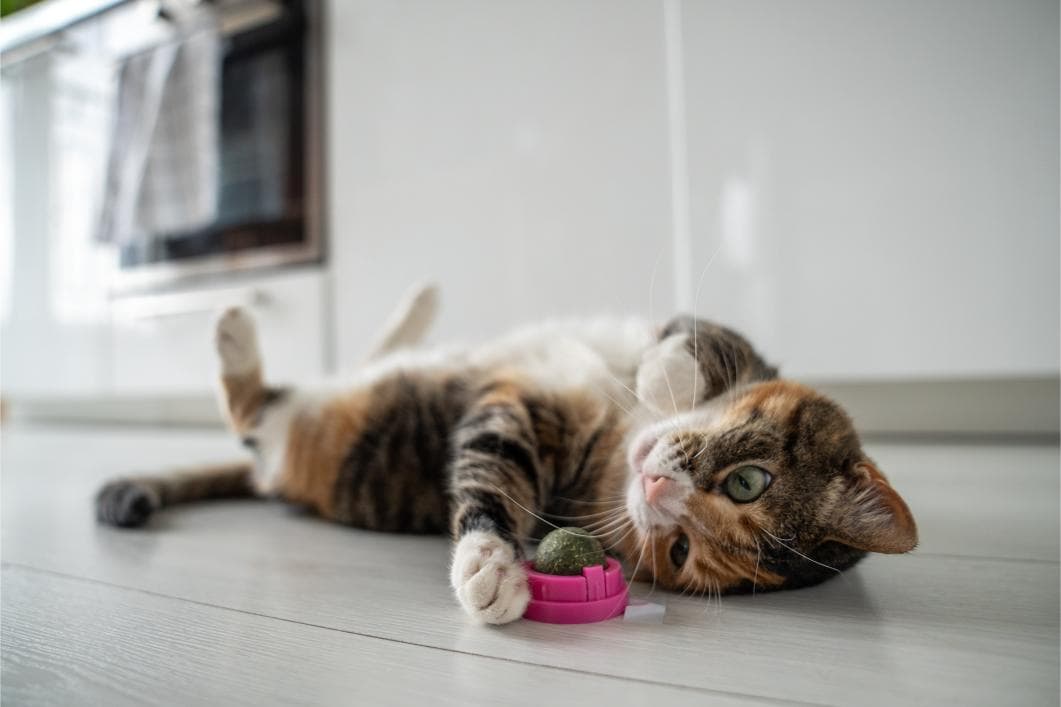Catnip Unveiled: A Deep Dive into Feline’s Fascination with this Mystical Herb

Let’s be honest: there isn’t much that is as entertaining as watching your cat enjoy a bit of Nepeta cataria, otherwise known as catnip! But what on Earth is this playtime plant, and what effects does it have on feline behavior?
What is Catnip?
Catnip is a plant that is part of the mint family, and it is the essential oil within it that has fun effects for kitties. Its origins are in Europe and Asia, and historically humans have foraged or cultivated it for uses such as calming tea or insect repellent. We won’t necessarily endorse it for your use, but there is a great chance that your cat could get some enrichment out of it!
Different Forms of Catnip
Head to the nearest pet supply store, and you’ll probably see catnip in packages of the dried herb, infused in toys, or even as an oil extract. You can use it in the following ways:
- Catnip toys can be added to your cat’s regular rotation of play items. They’ll bat around and chase catnip mice or balls, maybe with more vigor than other toys.
- You can sprinkle a small amount of dried catnip herb on the floor, and you may see your kitty chew on it a bit or just roll around in it. You can also rub or sprinkle it onto standard toys to pique interest in active play time. Keep catnip fresh in a sealed container in your fridge or freezer.
Much like any treat, only offer a small amount if your cat likes to actually eat catnip. Too much of a good thing can lead to stomach upset! - Oil can be sprayed on toys, and it can be a great addition to scratching posts. This can encourage interaction and scratching with the posts instead of with your furniture.
Catnip is an herb, and you can grow it at home. If you choose to add it to your garden, be aware that like many other mint plants, it can spread quickly. Better Homes and Gardens recommends growing catnip in a container to prevent it from taking over other plants. Plus, it is considered an invasive species in general.
You can also grow catnip in pots or containers indoors. Your feline might have a fine time rubbing against the plant or chewing on the growth, so you can keep the potted plant in a closed off room when you aren’t around to supervise. This can prevent too much enjoyment, along with knocked over dirt and broken containers.
Note that you should avoid pesticides or fertilizers to keep your kitty safe from poisoning.
Why Do Cats Enjoy Catnip?
Not all cats go crazy for the ‘nip. Young kittens may not be susceptible to its effects, and some cats are not genetically predisposed to any catnip-induced behavior changes at all.
But for the cats who do get a little wacky with this plant, it’s the compound nepetalactone that causes the reaction. When inhaled, this compound “binds to the olfactory cells which send their signal to the brain,” potentially behaving like a feel-good pheromone. This “happy time ”can appear as:
- rolling around
- flipping or “somersaults”
- “zoomies”
- vocalizations, including purring, meowing, growling, or chattering
- rubbing against the catnip itself, toys, furniture, or even you!
- “meditating,” napping, or “zoning out”
If you notice aggressiveness when your cat partakes in catnip, you may want to opt out of offering it to your pet.
If you have questions about your cat’s behavior or overall wellness, please reach out at (805) 957-PETS (7387) or request an appointment online!
